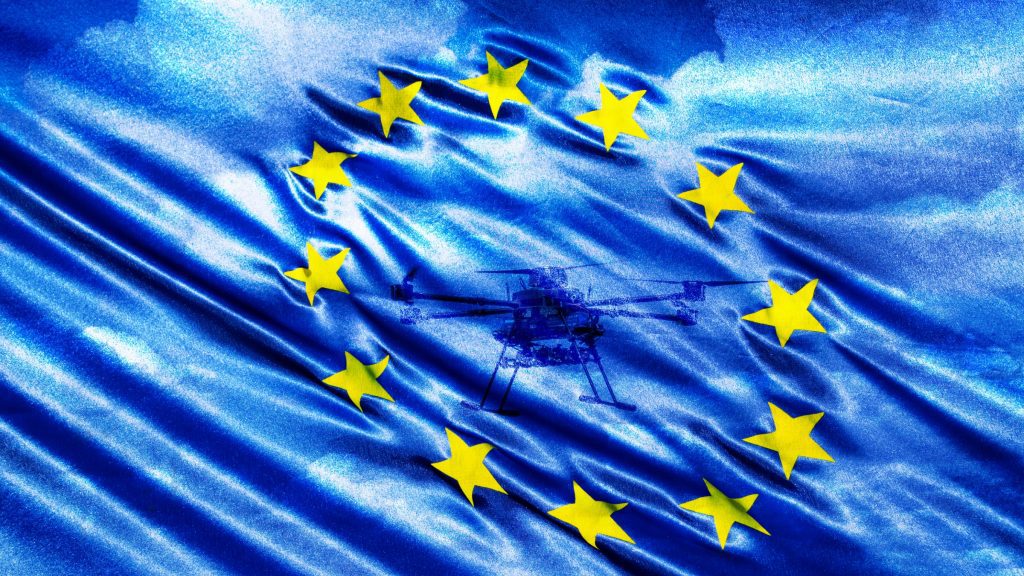
On Wednesday, European Union (EU) leaders gathered in Copenhagen for informal talks on trade, Ukraine war, and security, with discussions centered on a proposed “drone wall” to counter suspected Russian drone incursions disrupting Europe’s airspace.
Recent weeks have seen mysterious drone sightings in several countries, including Denmark, Norway, Germany, Poland, Romania, and Italy, where incidents forced temporary airport closures.
Officials described the drones’ herd as part of a “hybrid attack” that also included cyber intrusions, though Russia has denied involvement. Security experts stressed the need for a drone detection system that could respond more swiftly to such incursions.
In neighboring Germany, authorities reported drones of “various types and sizes” near sensitive infrastructure in Schleswig-Holstein, including power plants, hospitals, and an oil refinery. Officials said discussions are underway to enhance their anti-drone system, while similar sightings were noted above a military base in Sanitz.
NATO fighter jets recently intercepted Russian drones in Poland, which analysts warned was part of Moscow’s strategy to test European defenses, with military advisors demanding expansion of drone security systems to cover cross-border hotspots.
“The suspicions against Russia are ungrounded,” Russia’s embassy in Denmark countered on social media, suggesting the incidents could be a provocation designed to “push NATO into direct military confrontation.”
European sources, however, argued that only a modern drone control system could ensure reliable responses.
Building a ‘Drone Wall’
European Commission President Ursula von der Leyen first floated the concept of a drone wall in September. The proposed wall would not be a physical barrier but a technological system capable of tracking and neutralizing hostile drones through jamming or more aggressive countermeasures.
“It is the bedrock of credible defense,” she said, stressing that Europe’s eastern flank must be bolstered with independent strategic capabilities, including real-time space surveillance and a drone detection radar system.
German officials have even discussed laser weapons as a cost-effective alternative to missiles, which can cost millions of dollars per shot. Officials pointed to the need for layered anti drone defense systems that combine radar, jamming, and interception.
German Interior Minister Alexander Dobrindt confirmed plans to expand legal powers for security forces to shoot down drones, noting that existing laws only allow limited measures such as radio jamming.
“Not every drone controlled by foreign powers is automatically a threat,” he cautioned, while emphasizing the need for updated legislation. He also backed creating a centralized drone command to unify efforts across EU states.
Ukraine Aid, Security, and Finances
While drone defense dominated discussions, EU leaders also weighed a proposal to seize Russian assets to help finance a $164 billion loan for Ukraine. Supporters say the move is vital to sustain Kyiv’s resistance, but critics warn it could spark a crisis of confidence, prompting capital flight from European banks. Many leaders tied the debate to a broader drone command and control structure that NATO drone initiative could lead.
Analysts also stressed the importance of secure drone communication to prevent hostile takeovers of Unmanned Aerial Vehicle (UAVs) and sabotage attempts.
Alongside this, EU officials discussed border surveillance automation as a way to strengthen Europe’s eastern defenses against both drones and cyberattacks.
For Europe, the challenge is clear, countering Russian provocations without tipping into hysteria. As von der Leyen put it, “From the Baltic Sea to the Black Sea, Europe’s eastern flank keeps all of Europe safe. We must heed the call and build a drone wall.”
Inside Telecom provides you with an extensive list of content covering all aspects of the tech industry. Keep an eye on our Tech sections to stay informed and up-to-date with our daily articles.